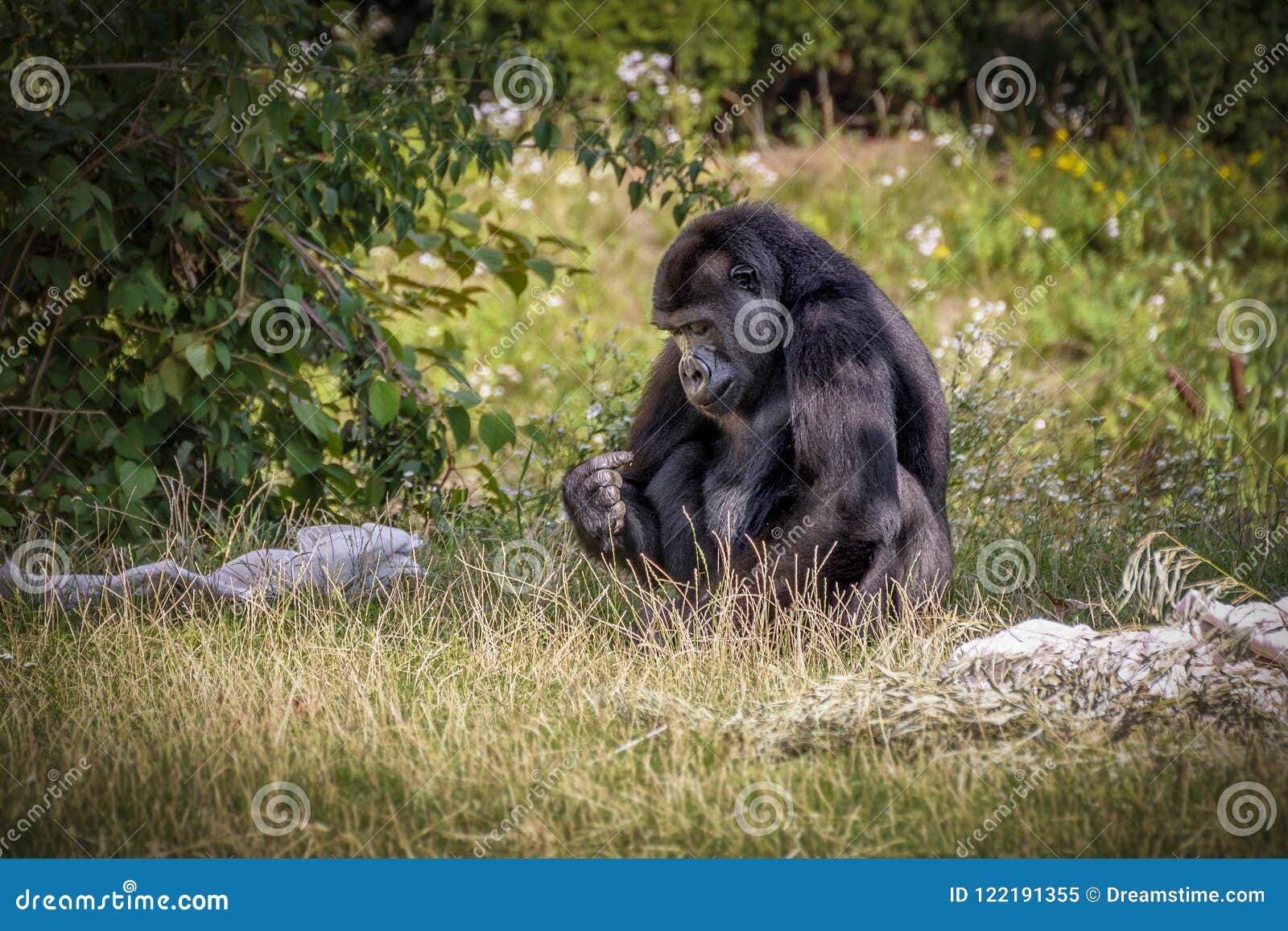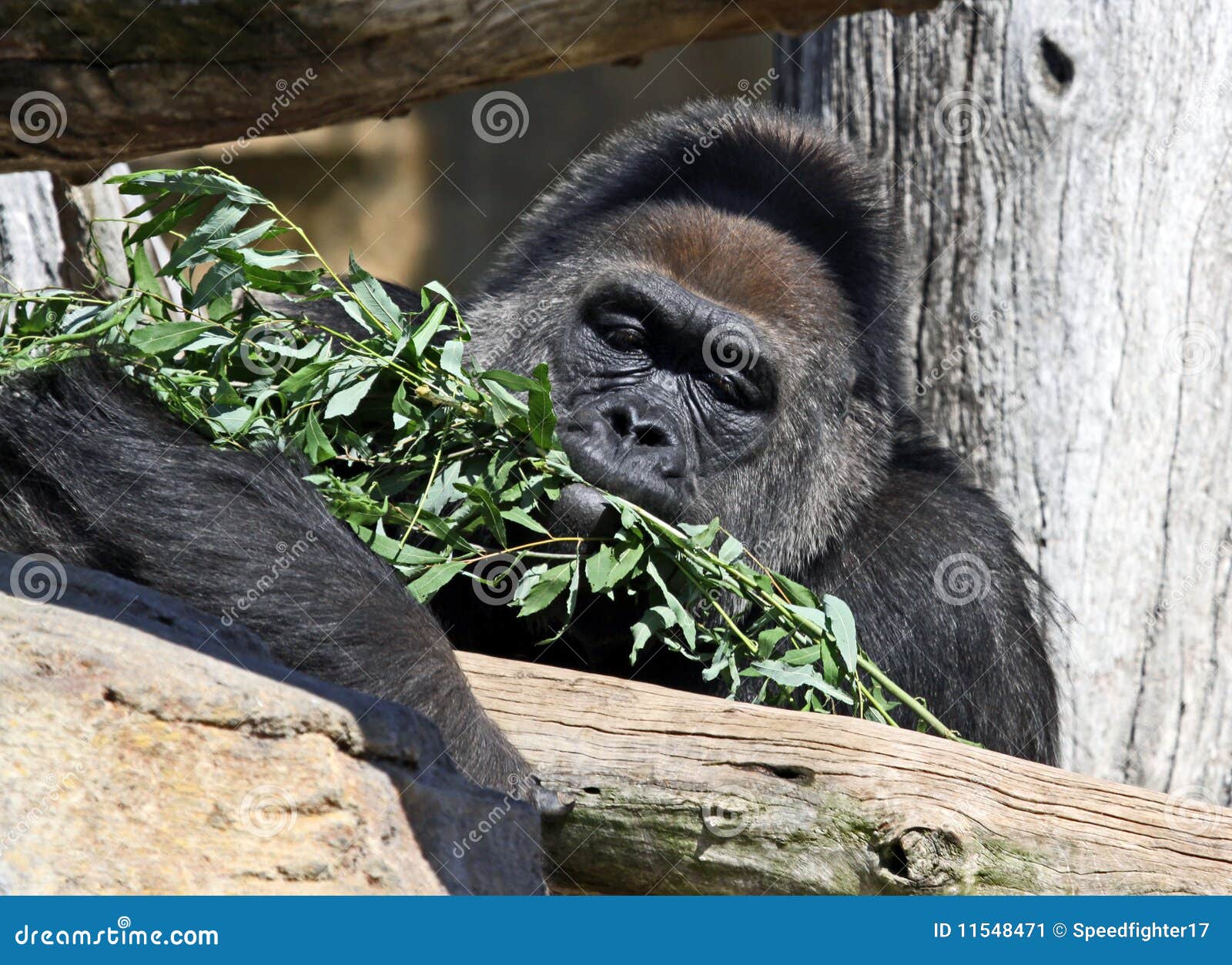Have you ever wondered what it would be like to eat like a gorilla? Imagine filling your plate with leaves, fruits, and bark all day long. Sounds wild, right? But believe it or not, the idea of eating gorilla food has gained traction among health enthusiasts who want to tap into the raw power of nature. It's not just about mimicking the diet of our closest relatives—it's about unlocking the secrets of a plant-based lifestyle that could transform your health. So buckle up, because we're diving deep into the world of gorilla-inspired eating!
Now, before you roll your eyes and think this is some bizarre trend, hear me out. Gorillas are some of the strongest animals on the planet, and their diet plays a huge role in their robust health. They don't hit the gym or count macros—they just eat what nature provides. And guess what? Scientists have discovered that their diet is packed with nutrients that could benefit humans too. So if you're ready to explore the jungle of nutrition, let's get started!
But here's the thing: eating gorilla food isn't just about copying their menu. It's about understanding how their diet aligns with our modern health goals. From boosting energy levels to reducing inflammation, there's a lot to learn from these majestic creatures. So whether you're a hardcore carnivore or a die-hard vegan, this article might just change the way you think about food. Let's go!
- Ashley Inked The Ultimate Guide To Her Inspiring Journey Inked Adventures And More
- Venom Filter The Ultimate Guide To Enhancing Your Snapchat Experience
Table of Contents:
- What Do Gorillas Eat?
- How Does Gorilla Food Compare to Human Diets?
- Health Benefits of Eating Gorilla Food
- Challenges of Adopting a Gorilla-Inspired Diet
- Practical Tips for Incorporating Gorilla Foods
- Biography of Gorillas
- Sustainability of Gorilla-Inspired Eating
- Busting Myths About Eating Gorilla Food
- Scientific Research on Primate Diets
- Final Thoughts on Eating Gorilla Food
What Do Gorillas Eat?
Gorillas are known for their massive strength, and their diet plays a crucial role in fueling their power. So what exactly do these giants munch on? Well, it’s a mix of leaves, fruits, stems, bark, and even insects occasionally. Their diet is predominantly plant-based, with a focus on fibrous foods that keep their digestive systems running smoothly. And let’s not forget about those delicious fruits—gorillas love bananas, figs, and other tropical delights!
But here’s the kicker: gorillas don’t just eat random plants. They’re selective about what they consume, choosing foods that are high in nutrients and low in toxins. This selective eating habit ensures they get the most out of every meal. For example, they’ll strip leaves from stems to get to the tender parts, or peel fruits to avoid consuming harmful substances. It’s like nature’s version of fine dining!
- Did Skirby Do It With A Dog Unveiling The Truth Behind The Controversy
- How To Add Friends In Free Fire By Id The Ultimate Guide For Players
Key Foods in a Gorilla’s Diet
- Leaves and stems
- Fruits (bananas, figs, etc.)
- Bark and wood
- Insects (occasionally)
How Does Gorilla Food Compare to Human Diets?
Now, let’s compare gorilla food to what humans typically eat. While we love our burgers, pizzas, and processed snacks, gorillas stick to nature’s offerings. Their diet is rich in fiber, antioxidants, and essential nutrients, which are often lacking in the average human diet. On the flip side, our meals are often high in sugar, fat, and empty calories that can lead to health issues like obesity and heart disease.
But here’s the good news: you don’t have to give up all your favorite foods to adopt a gorilla-inspired diet. You can start by incorporating more plant-based options into your meals. For instance, swap that greasy burger for a hearty salad packed with leafy greens, fruits, and nuts. Trust me, your body will thank you!
The Nutritional Gap
One of the biggest differences between gorilla food and human diets is the fiber content. Gorillas consume up to 60 grams of fiber per day, while most humans struggle to hit the recommended 25-30 grams. This fiber deficit can lead to digestive issues and even increase the risk of chronic diseases. By eating more like a gorilla, you could bridge this nutritional gap and improve your overall health.
Health Benefits of Eating Gorilla Food
Eating gorilla food might sound unconventional, but it comes with a host of health benefits. First and foremost, it’s a great way to boost your fiber intake, which can improve digestion and prevent constipation. Plus, the high antioxidant content in fruits and vegetables can help reduce inflammation and protect against diseases like cancer and heart disease.
Another benefit? Weight management. Since gorilla-inspired foods are low in calories and high in nutrients, they can help you maintain a healthy weight without feeling deprived. And let’s not forget about the mental health perks. Consuming more plant-based foods has been linked to improved mood and reduced stress levels. Who knew eating like a gorilla could make you feel so good?
Top Benefits at a Glance
- Improved digestion
- Reduced inflammation
- Better weight management
- Enhanced mental health
Challenges of Adopting a Gorilla-Inspired Diet
While eating gorilla food sounds great in theory, there are some challenges to consider. First off, finding the right foods can be tricky. Not everyone has access to fresh, organic produce, and some gorilla staples like bark or leaves might not be readily available at your local supermarket. Plus, preparing these foods can be time-consuming, especially if you’re used to quick, convenient meals.
Another challenge is the potential for nutrient imbalances. Gorillas have evolved to thrive on their specific diet, but humans have different nutritional needs. For example, a gorilla-inspired diet might lack certain vitamins and minerals that are essential for human health, like vitamin B12 and omega-3 fatty acids. That’s why it’s important to supplement your diet with fortified foods or vitamins if needed.
How to Overcome These Challenges
Here are a few tips to make the transition smoother:
- Start small by adding more fruits and veggies to your meals.
- Experiment with different plant-based recipes to keep things interesting.
- Consider consulting a nutritionist to ensure you’re getting all the nutrients you need.
Practical Tips for Incorporating Gorilla Foods
Ready to give gorilla food a try? Here are some practical tips to help you get started:
First, focus on adding more leafy greens to your diet. Spinach, kale, and Swiss chard are excellent choices that mimic the fibrous leaves gorillas love. Next, stock up on fresh fruits like bananas, figs, and berries. These sweet treats are not only delicious but also packed with nutrients. And don’t forget about nuts and seeds—they’re a great source of healthy fats and protein.
Finally, try to limit processed foods as much as possible. Instead of reaching for a bag of chips, snack on some raw veggies or fruit. It might take some getting used to, but your body will adjust over time. Remember, the goal isn’t to become a full-time gorilla eater—it’s to incorporate more natural, nutrient-dense foods into your diet.
Sample Meal Plan
- Breakfast: Smoothie with spinach, banana, and almond milk
- Lunch: Salad with mixed greens, cherry tomatoes, and avocado
- Dinner: Stir-fried veggies with tofu and quinoa
- Snack: Apple slices with almond butter
Biography of Gorillas
Before we dive deeper into the world of gorilla-inspired eating, let’s take a moment to appreciate these incredible creatures. Gorillas are the largest living primates, with males weighing up to 400 pounds and standing over 5 feet tall. They’re native to the forests of Central Africa and are known for their intelligence, strength, and gentle nature.
Here’s a quick overview of their key characteristics:
| Attribute | Details |
|---|---|
| Scientific Name | Gorilla gorilla |
| Habitat | Tropical rainforests of Central Africa |
| Diet | Primarily plant-based, with occasional insects |
| Lifespan | 35-40 years in the wild |
| Conservation Status | Endangered |
Sustainability of Gorilla-Inspired Eating
When it comes to sustainability, eating gorilla food has a lot of potential. Plant-based diets are generally more environmentally friendly than diets high in animal products. By consuming more fruits, vegetables, and nuts, you can reduce your carbon footprint and help protect the planet. Plus, supporting local farmers and choosing organic produce can further enhance the sustainability of your diet.
However, it’s important to be mindful of where your food comes from. Some gorilla-inspired foods, like tropical fruits and nuts, may require significant resources to grow and transport. That’s why it’s a good idea to focus on seasonal, locally sourced options whenever possible. This way, you can enjoy the benefits of a gorilla-inspired diet while minimizing its impact on the environment.
Busting Myths About Eating Gorilla Food
There are a few common myths about eating gorilla food that need to be addressed. One of the biggest is that it’s too restrictive or boring. While it’s true that a gorilla-inspired diet focuses on plant-based foods, there’s no shortage of variety. From exotic fruits to leafy greens, there’s something for everyone to enjoy.
Another myth is that eating like a gorilla will make you weak or deficient in certain nutrients. While it’s true that some nutrients may be harder to obtain on a plant-based diet, this can be easily addressed with proper planning and supplementation. By working with a nutritionist and staying informed, you can ensure you’re getting everything your body needs.
Scientific Research on Primate Diets
So what does the science say about eating gorilla food? Studies have shown that primate diets are rich in fiber, antioxidants, and other essential nutrients that can benefit human health. For example, a 2020 study published in the journal *Nutrients* found that plant-based diets can reduce the risk of chronic diseases like diabetes and heart disease. Another study highlighted the importance of fiber in maintaining gut health and preventing obesity.
Of course, more research is needed to fully understand the effects of a gorilla-inspired diet on human health. But the existing evidence suggests that incorporating more plant-based foods into your meals is a step in the right direction.
Final Thoughts on Eating Gorilla Food
So there you have it—a comprehensive look at the world of eating gorilla food. From the health benefits to the practical tips, we’ve covered everything you need to know to get started. While it may not be for everyone, adopting a gorilla-inspired diet can be a powerful way to improve your health and connect with nature.
Now it’s your turn to take action. Whether it’s swapping out a few meals for plant-based options or diving headfirst into the world of gorilla food, every step counts. And don’t forget to share your experiences in the comments below—we’d love to hear how it goes! Together, we can create a healthier, more sustainable future—one leafy green at a time.
- How To Play Timbiriche The Ultimate Guide For Fun And Excitement
- Diamond The Body Age A Deep Dive Into Her Life And Journey


